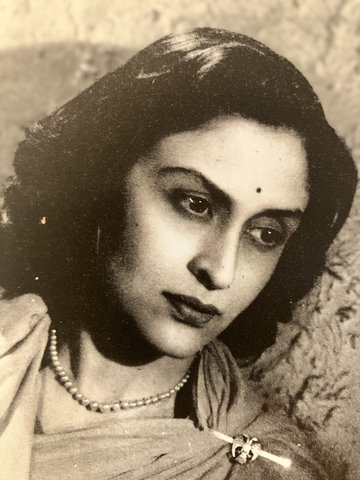
Kamala Markandaya
‐
Indian-born British author known for her novels that explore the clash between Indian traditions and western values, focusing on themes of colonialism and immigration
Other names
Kamala Purnaiya
Purnaiya Taylor
Place of birth
Date of arrival to Britain
Place of death
London
Date of time spent in Britain
1948–2004
About
Kamala Markandaya was an Indian novelist, born in Mysore in 1924 during the British Raj. Raised in a Brahmin family, Markandaya studied history at the University of Madras and worked briefly with the Indian Army during the Second World War. She later became a journalist and contributed short stories to Indian magazines. In 1948 she moved to England and married British journalist Bertrand Taylor, making Britain her permanent home.
Markandaya, writing in English, was among the first generation of Indian authors who introduced India to international readers. She never shied away from exploring her cultural roots, despite spending most of her adult life in London, often crafting semi-autobiographical characters. Several of her novels address the cultural conflict arising from the tensions between Indian traditions and Western modernity. Some Inner Fury (1955) follows a young Indian woman named Mira who falls in love with an Englishman during India’s struggle for independence. A Silence of Desire (1960) explores the life of an office clerk caught between modern medical science and traditional beliefs when his wife seeks help from a spiritual healer. Possession (1963) narrates the story of a young Indian artist taken to England by a wealthy British woman. The Nowhere Man (1972) focuses on the traumatic challenges Indian immigrants face in Britain, such as racism, cultural tension and family conflict. The main character, Srinivas, has lived in England for thirty years but is still told by local thugs to 'go back to your country'.
Markandaya first achieved international acclaim with her debut novel, Nectar in a Sieve (1954), revolving around a farming family facing hardship and industrialization in rural India. The book became a bestseller and continues to be widely taught in schools and universities, particularly in the United States. Over the following three decades, she published ten more novels, some of which reflected on the contemporary landscape of India, examining both rural and urban areas. She died in 2004 due to kidney failure.
Debut novel, Nectar in a Sieve (1954), was named a Notable Book by the American Library Association, 1955
Winner of the USA National Association of Independent Schools Award, 1967
Winner of the Asian Prize, 1974
Honoured with the English-Speaking Union Award, 1974
Nectar in a Sieve (London: Putnam, 1954)
Some Inner Fury (London: Putnam, 1955)
A Silence of Desire (London: Putnam, 1960)
Possession (London: Putnam, 1963)
A Handful of Rice (London: Putnam, 1966)
The Coffer Dams (London: Putnam, 1969)
The Nowhere Man (London: Hamish Hamilton, 1972)
Two Virgins (London: Chatto & Windus, 1973)
The Golden Honeycomb (London: Chatto & Windus, 1977)
Pleasure City (London: Viking, 1982)
Bombay Tiger (New Delhi: Penguin, 2008)
Adkins, Joan F., ‘Kamala Markandaya: Indo-Anglian Conflict as Unity’, Journal of South Asian Literature 10.1 (1974), pp. 89–102
Aithal, S. K, ‘Indo-British Encounter in Kamala Markandaya’s Novels’, Journal of South Asian Literature 22.2 (1987), pp. 49–59
Hawtree, Christopher, ‘Obituary: Kamala Markandaya’, Independent (15 June 2004)
Kumar, Jai, ‘Obituary: Kamala Markandaya’, Guardian (25 June 2004)
Kumar, Prem, ‘Conflict and Resolution in the Novels of Kamala Markandaya’, World Literature Today 60.1 (1986), pp. 22–7
Kumar, Shiv K., ‘Tradition and Change in the Novels of Kamala Markandaya’, Books Abroad 43.4 (1969), pp. 508–13
Mishra, Parvati, Class Consciousness in the Novels of Kamala Markandaya (New Delhi: Atlantic Publishers & Distributor, 2001)
Sharma, Mona, ‘Parent–Child Relationship in the Major Novels of Kamala Markandaya', Indian Literature 54.2(256) (2010), pp. 177–87
Image credit
By Hythlodaeus – own work, CC BY-SA 4.0, https://commons.wikimedia.org/w/index.php?curid=127344295
Entry credit
Anisah Rahman
